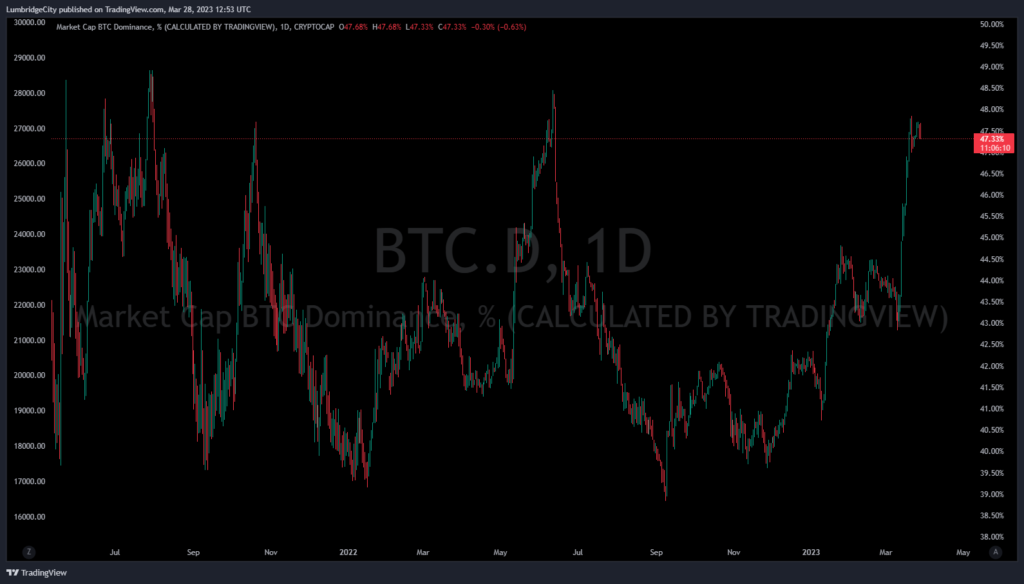A self-upgrading blockchain with a focus on formal verification, smart contracts, and stakeholder governance.

Price Chart for XTZ
Trade on KuCoin, Automate with 3commas.
XTZ is a self-upgrading blockchain that focuses on formal verification, smart contracts, and stakeholder governance. It is an open-source protocol that enables users to securely and reliably store and transfer digital assets. The XTZ blockchain is powered by a consensus algorithm called Proof-of-Stake (PoS). This algorithm allows users to stake their coins and earn rewards for validating transactions on the network.
XTZ is a public blockchain that allows anyone to participate in the network. It is designed to be secure, efficient, and scalable.
The XTZ protocol is built on a decentralized network of nodes that are responsible for validating transactions and maintaining the integrity of the blockchain.
XTZ is a self-upgrading blockchain that is designed to be more secure, efficient, and scalable than other blockchains. It has a number of features that make it stand out from other blockchains, including:
- Formal Verification: XTZ uses formal verification to ensure that the code running on the blockchain is secure and bug-free. This helps to reduce the risk of malicious attacks and bugs that could cause the network to malfunction.
- Smart Contracts: XTZ supports the development of smart contracts, which are self-executing contracts that are written in code and stored on the blockchain. Smart contracts can be used to automate various processes and transactions on the network.
- Stakeholder Governance: XTZ has a built-in governance system that allows stakeholders to vote on changes to the network. This helps to ensure that the network is secure and that decisions are made in the best interests of the community.
XTZ is a self-upgrading blockchain that is designed to be secure, efficient, and scalable. It is a public blockchain that is open to anyone who wishes to participate in the network.


The XTZ protocol is powered by a consensus algorithm called Proof-of-Stake (PoS), which allows users to stake their coins and earn rewards for validating transactions on the network.
It also has features such as formal verification, smart contracts, and stakeholder governance that make it stand out from other blockchains.
Overall, XTZ is an innovative self-upgrading blockchain that is designed to be secure, efficient, and scalable. It has a number of features that make it stand out from other blockchains, and it is a public blockchain that is open to anyone who wishes to participate in the network.
Learn more on their LinkedIn Page.
If you’re looking for a secure, efficient, and scalable blockchain, XTZ is worth considering.
Frequently Asked Questions
Q: What is A self-upgrading blockchain?
A: A self-upgrading blockchain is an innovative platform that combines different features to make blockchain technology more secure, transparent, and scalable. It focuses on formal verification of smart contracts, stakeholder governance, and secure coding practices. This creates a reliable, safe, and efficient decentralized network for operations.
Q: What are the benefits of a self-upgrading blockchain?
A: The main benefits of self-upgrading blockchain technology include increased security, enhanced transparency, and improved scalability. Additionally, it enables users to stay up-to-date and benefit from the latest technology advancements, while still being able to keep up with the ever-changing market conditions.
Q: How does a self-upgrading blockchain work?
A: A self-upgrading blockchain works by introducing a constantly evolving set of rules to the network’s architecture. These rules are enforced through formal verification rules and verified smart contracts. Additionally, stakeholders are able to take part in governance activities to ensure that the network is running efficiently and securely.
Q: What is formal verification in self-upgrading blockchain technology?
A: Formal verification is a process that ensures that the network is running securely and efficiently. It involves the use of mathematical models and algorithms to verify that the network’s code is functioning correctly and not vulnerable to any potential exploits or bugs. This provides users with a layer of trust and ensures the network’s long-term stability.
Q: What is stakeholder governance in self-upgrading blockchain technology?
A: Stakeholder governance is an essential element of self-upgrading blockchain technology. This process involves various stakeholders, such as users, miners, developers, and exchanges, coming together to ensure the network is taking the correct decisions for the benefit of the collective. Decisions are made based on consensus and each stakeholder’s opinion is taken into account.
Key Trading Tips To Remember
We have been giving away our proven crypto trading plan PDF since 2015. Join thousands of people and learn to profit from trend trading. Sign up for the Free Crypto Trading Plan PDF or learn about our Altcoin Season Indicator.
This post was automated by Make and generated with ChatGPT Research. It may contain errors or outdated content.






